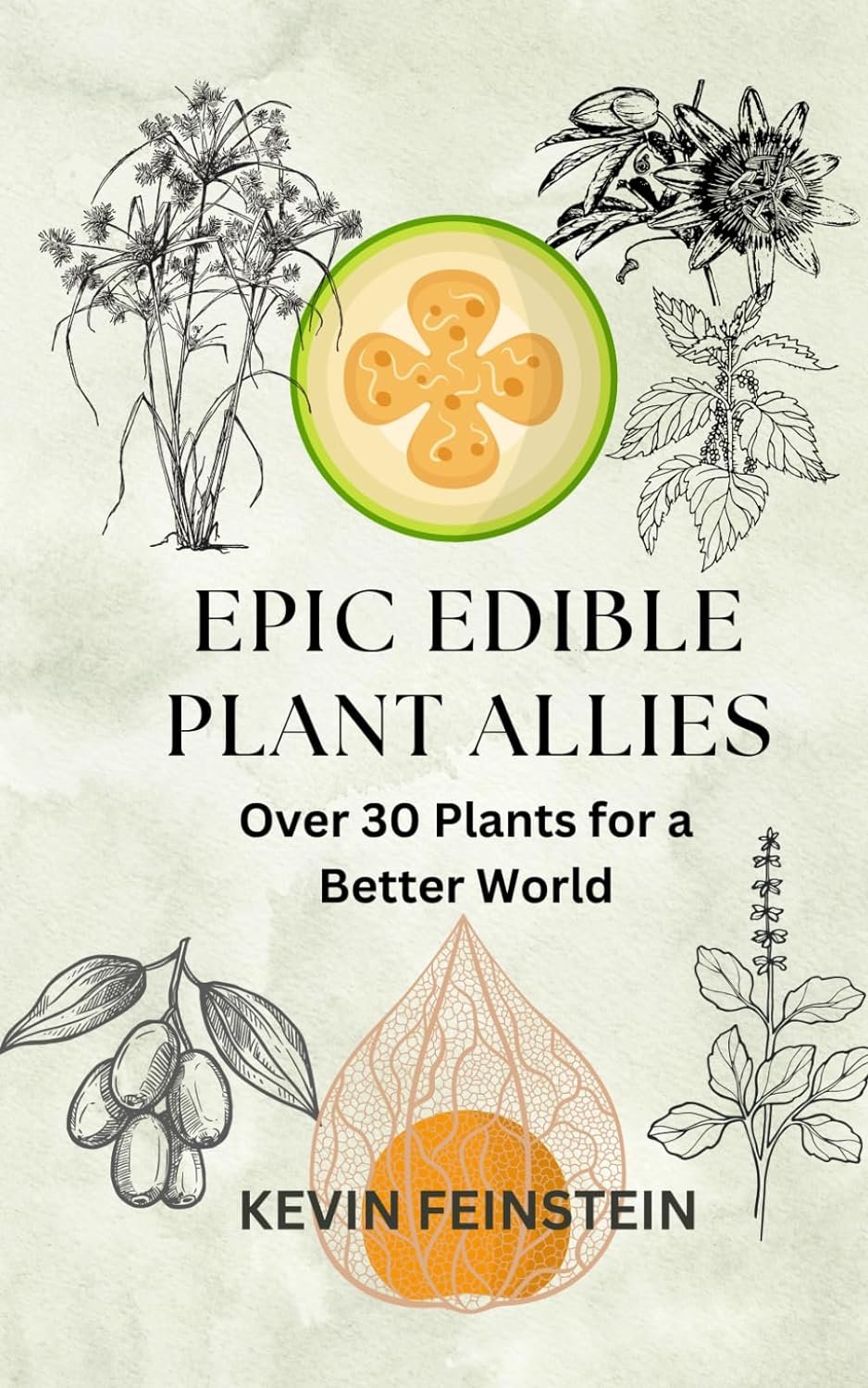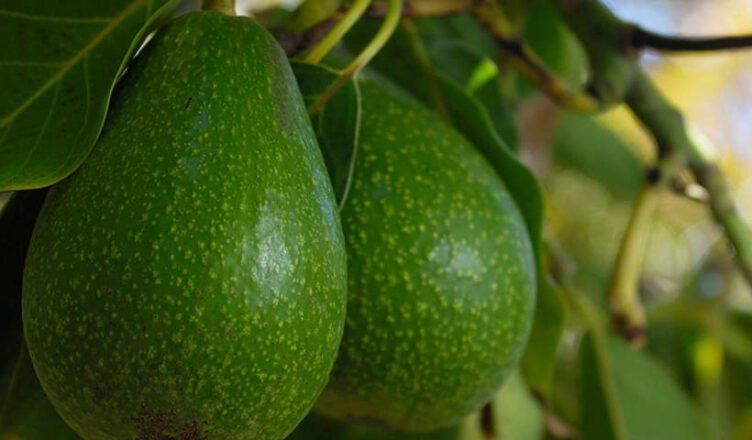The following is an excerpt from the new book,
Avocados nowadays aren’t really considered that uncommon of a fruit, but they sure are very unusual! There is really nothing else like them. They produce a large fruit that is loaded with fat. There are very few fruits in the world that contain any significant amount of fat. The olive is another that comes to mind. Some even theorize that avocados were at one point in history dispersed by megafauna (giant animals) that ate the fruits whole and then pooped out the pit as they made their way through the landscape, spreading the plant.
They certainly have been deliberately grown and spread by humans for a very long time. Avocados, like sweet potatoes, are one of those foods that is okay for almost every specialty diet. They even work for keto diets, and are great for young children, athletes, and pretty much everyone. No controversy really exists with eating avocados. Pretty much all agree: they are good for you! They are, oddly enough, toxic to most other animals, which I find to be a bit unusual.
There is plenty of information out there on how to grow avocados, and I am no professional avocado farmer. But I will give you my two cents on them and hopefully reduce this information to something that is easy to understand and can provide a nice overview.
There are two basic types of avocado — “Mexican” and “Guatemalan” are what they are typically called, indicating where the different types originated. The Mexican types are generally much more cold tolerant than the Guatemalan types. The Mexican types also have anise smelling leaves when crushed; the Guatemalan types do not. There are hybrids of them in existence as well. There is a lot of confusion out there with Florida types versus California types, but these terms are broad and for most people extremely misleading. What you are looking for should be plant-specific, not some category imposed on the them. “Hass” is a variety that most people are used to, the most commonly sold variety, and it should be taken as nothing more than just one variety called “Hass,” that happens to be very common. There are lots of different type avocados with different skins, different sizes, different oil content, different cold hardiness. Many avocados are not tolerant of any frost at all, and others have been reported to be hardy down to nearly 10 degrees Fahrenheit (for short periods).
Beyond that, there are A types and B types. A and B here simply refers to the time of day different parts of the flowers open. For instance an A type’s flowers have their female parts open in the morning and their male parts open in the evening. The B type avocados do the opposite. So, you need an A and B type fairly close together for optimal pollination and fruit set.
Avocados are not easy to grow, as far as my criteria goes.
They cannot take much cold and some varieties cannot tolerate any frost at all. They typically don’t do that well in containers, and if they do, they don’t yield very much. They also don’t like extreme heat and are prone to get their trunks burned by the sun, damaging the plants or killing them. That is often why you see the trunks of avocado trees painted white to protect them (a wise practice). They are fussy about soil, too — not too wet, not too dry — and they must have good drainage.
Avocados should, in my opinion be constantly allowed to cross and select for cold hardiness. Is it possible that genes could develop naturally to allow for a shorter season, more cold tolerant avocado? Seedling avocados with this in mind should be planted out by the millions of acres in my opinion — even if the avocado produced is quite a bit smaller. Is there a deciduous potential in the avocado gene pool? There is a citrus that is deciduous (Poncirus) and there is a cold hardy, deciduous member of the otherwise tropical family, Annonaceae — the paw paw. So, who knows, but I wish more would try breeding and selecting them for cold hardiness.
They are great climbing trees.
There is another great aspect of avocado trees when mature that I want to mention — they can be great climbing trees. Their strong but not too large branches are smooth to the touch and as a former tree-climbing enthusiast, it was one of my favorite trees to climb. They are similar to the California bay tree (same family), which I climbed a great many of in my twenties. Avocado trees are valuable and slow growing, so do not climb anyone else’s tree — what if you broke a branch? The owner would be greatly ill with you.
Years ago, when I lived in Silicon Valley, my friends and I found a large, mature avocado tree in one of the neighborhoods. It was January and the tree absolutely loaded with fruit. The fruits were a bit smaller than the normal “Hass” variety, and the skin was very thin and shiny black — and smooth! I had never seen avocados like that before. We tasted them and they were delicious and super oily! But certainly different from Hass. We all agreed that we liked them even better. I did not know at the time, as I was just beginning my journey to learn about plants and farming, that they were the “Mexicola” variety. One of the more cold hardy Mexican types of avocado.
The three of us climbed up in the tree and started picking what we could reach. This was how I first learned about what great climbing trees avocados are. After consuming those in a short amount of time, we decided we needed a tool to assist us. We went to Home Depot and bought a fruit picker. This was intended for citrus picking but worked perfectly for the avocado tree. It was a long yellow pole that you could extend with a little claw like basket on the end. We gathered as many as we could from outside of the tree, and then we climbed the tree with the fruit picker to get even more.

The tree must have been over 50 feet tall.
One of our friends was a guest from Venezuela, a small young man, built like a monkey. I had never seen anyone so good at climbing. He went out on smaller branches that us mere normal-sized mortals dared not, and gathered a bunch more of the fruits that way.
They were not all soft-ripe. In fact, you harvest avocados when they are still hard and let them ripen up at home. So we had baskets and basket of avocados that we enjoyed. Many of the folks in the house were vegan and poor, so it was a welcome score.
A fond memory I have of these avocados is the game time guacamole we made with them. The particular football game where we pigged out on this amazing guacamole was none other than the infamous “Tuck Rule” game. For those of you are that are American football fans, you’ll know exactly what I am referring to. For those that aren’t, it was the game with one of the most controversial calls by the officials of all time, that led to a rule called the “Tuck Rule.” It forever changed the destiny of football, by kickstarting Tom Brady and the unmatched reign of the Patriots for two decades. To add to this story, Tom Brady was from the town we were living and watching the game in. They were playing the Raiders, the local team. It was one of those big games where everyone in town was watching or at least aware of it, even the non-football fans. I will always associated “Mexicola” avocados with football and this time of my life.


